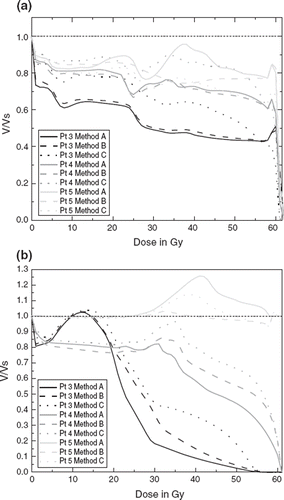Figures & data
Figure 1. CTV-plan (red line) and daily CTVs as delineated on CBCT-scans for fraction 1 to 4 (red lines). The volume PSVC, Small is segmented in cyan.
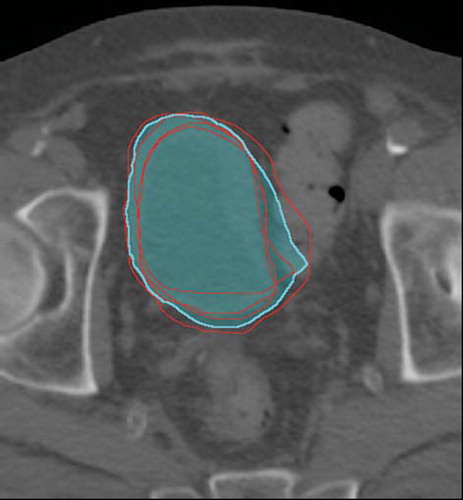
Table I. The mean volume ratios of the PTVs for the three ART strategies vs. the standard non-adaptive RT are given separately for patients treated with SIB and those treated to the bladder only.
Figure 2. The plan selection frequencies (the percentages of times each of the Small, Medium and Large plan was chosen) for each patient are shown for method A, B and C respectively. The last column is the average plan selection frequencies across all ten patients. Patient no. 10 had the large size plan chosen for method A in every fraction, because of a large rectum on the planning CT.
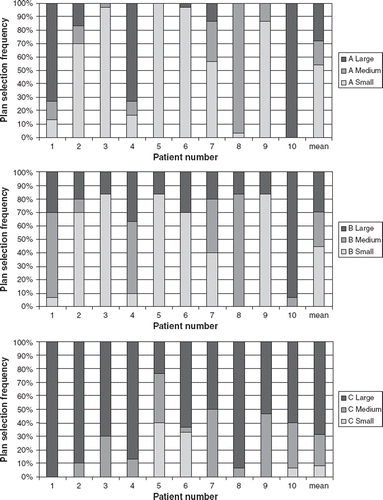
Figure 3. The number of treatment fractions, where the PSVlarge did not cover the bladder as seen on the CBCT are shown for each method. Patient no. 1 had an intestinal flexure making a concavity in the top of the bladder on the planning CT. Patient no. 2 had large differences in the rotational components in the bony anatomy match. Patient no. 4 had an intestinal flexure pushing the bladder to the right on the planning CT. Patient no. 10 had a large rectum on the plan CT.
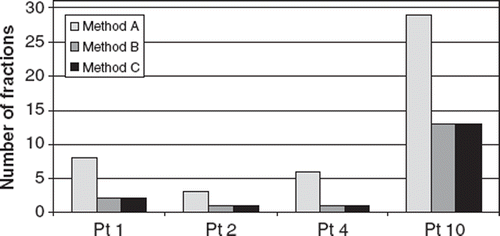
Figure 4. Mean ratio DVHs for the body outline (a) with standard deviations as error bars. Corresponding figures are shown for bowel cavity (b) and rectum PRV (c). The dotted line at unity volume ratio indicates where the ART method and the standard plan have the same volume.
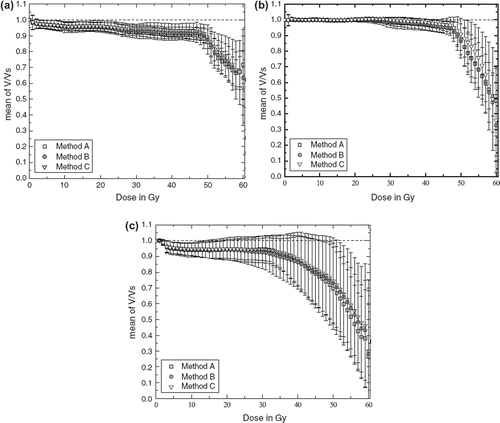
Figure 5. For method A, B and C, ratio DVHs of body outline (a) and rectum PRV (b) are shown for the three patients receiving treatment of the bladder only. The dotted line at unity volume ratio indicates where the ART method and the standard plan have the same volume. Patient no. 5 had prostate included in the CTV.
